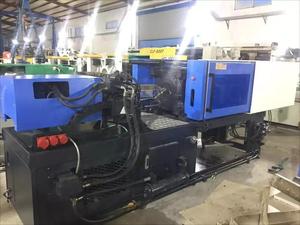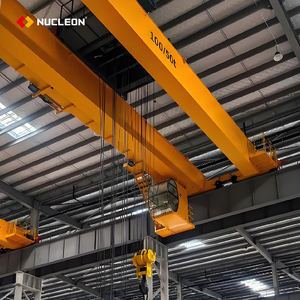
All categories
Featured selections
Trade Assurance
Buyer Central
Help Center
Get the app
Become a supplier

(687 products available)



























The industrial sector heavily relies on machinery to enhance productivity and efficiency, and one of the key pieces of equipment in this realm is the haitian 120 ton. These machines play a crucial role in the manufacturing process, particularly in the production of plastic components. haitian 120 ton are typically pre-owned machines that have been refurbished or maintained for continued use, offering a cost-effective solution for businesses looking to expand their production capabilities without the significant outlay required for new machinery. They are designed to inject molten plastic into molds, forming a variety of parts and products used in numerous applications, from automotive parts to household items. By investing in a haitian 120 ton, businesses can benefit from advanced technology at a fraction of the cost of new equipment, making them an attractive option for many industrial operations.
haitian 120 ton come in various types, each designed to meet specific production needs. The most common types include hydraulic, electric, and hybrid machines. Hydraulic haitian 120 ton are known for their high clamping force and durability, making them suitable for producing larger parts. Electric machines, on the other hand, offer precision and energy efficiency, ideal for high-volume production runs of smaller components. Hybrid machines combine the benefits of both hydraulic and electric systems, providing a balance between power and efficiency. Each type of haitian 120 ton offers unique advantages, and the choice largely depends on the specific requirements of the production process, such as the size and complexity of the parts being manufactured.
The functionality of haitian 120 ton is defined by several key features that enhance their operational efficiency. One of the primary features is the clamping unit, which holds the mold in place during the injection process. The clamping force, measured in tons, is a critical specification, with machines typically ranging from 30 to 3000 tons. Another essential feature is the injection unit, responsible for melting and injecting the plastic into the mold. This unit's capabilities are measured in terms of shot size and injection speed, determining the volume of plastic that can be processed in each cycle. Advanced control systems in haitian 120 ton allow for precise adjustments to temperature, pressure, and speed, ensuring consistent quality in the finished products. These features collectively enable haitian 120 ton to produce complex parts with high precision and repeatability.
Opting for a haitian 120 ton offers several advantages, especially for businesses looking to optimize their manufacturing processes. One of the primary benefits is cost savings, as these machines are significantly less expensive than purchasing new equipment, allowing companies to allocate resources to other critical areas such as research and development. Additionally, haitian 120 ton provide an opportunity to access technology that may otherwise be unaffordable. Many of these machines come with advanced features and capabilities, enabling businesses to improve production efficiency and product quality. The availability of spare parts and service support for haitian 120 ton further enhances their appeal, ensuring minimal downtime and maintenance costs. Furthermore, utilizing pre-owned machinery aligns with sustainability goals by extending the lifecycle of industrial equipment and reducing waste.
Proper maintenance and care are essential for ensuring the longevity and optimal performance of haitian 120 ton. Regular inspections and servicing can help identify potential issues before they lead to significant problems, minimizing downtime and repair costs. Key maintenance practices include checking the hydraulic system for leaks, ensuring the electrical components are functioning correctly, and lubricating moving parts to reduce wear and tear. Calibration of the control systems is also crucial to maintain precision in the molding process. Additionally, keeping a record of all maintenance activities can help track the machine's performance and identify patterns that may indicate underlying issues. By adhering to a comprehensive maintenance schedule, businesses can maximize the efficiency and lifespan of their haitian 120 ton, ensuring they remain a valuable asset in the production line.
When selecting a haitian 120 ton, it's important to consider several factors that will impact its performance and suitability for your manufacturing needs. First, evaluate the machine's specifications, such as clamping force, shot capacity, and injection speed. These elements determine the range of products that can be efficiently produced. The compatibility of the machine with the types of plastics used in your production is another critical consideration. Not all machines handle all plastic types equally well, so understanding your material needs can guide your choice. Additionally, consider the machine's age and condition; older machines may require more frequent maintenance, impacting long-term operational costs.
Another factor to consider is the technological features of the haitian 120 ton. Modern machines often come equipped with advanced control systems that allow for precise adjustments in the molding process, enhancing product consistency. Look for machines with programmable logic controllers (PLCs) and user-friendly interfaces, which can improve efficiency and reduce human error. Energy consumption is also a key consideration, as machines with higher efficiency can lead to significant cost savings over time. Understanding the energy profile of the machine can be crucial for businesses aiming to minimize operational expenses.
The size of a haitian 120 ton should be determined by the size and complexity of the parts you intend to manufacture. Larger machines are generally capable of producing bigger parts or handling larger molds, but they also require more space and resources. It's essential to match the machine's capabilities with your production requirements to ensure optimal performance.
For maintaining a haitian 120 ton, regular inspections are crucial. These include checking the hydraulic system for leaks, ensuring electrical components are functioning correctly, and lubricating moving parts to prevent wear and tear. Calibration of control systems is also necessary to maintain precision in the molding process. Keeping detailed records of maintenance activities can help track performance issues and prevent downtime.
While specific recommendations depend on individual needs, certain brands are renowned for reliability and performance in the haitian 120 ton market. Researching reviews and performance histories of different models can provide insights into their longevity and efficiency. Consulting industry experts or peers can also yield valuable advice tailored to your specific production requirements.
Using a haitian 120 ton aligns with sustainability goals by extending the lifecycle of industrial equipment, reducing waste, and minimizing the environmental impact associated with manufacturing new machines. Additionally, choosing machines that are energy-efficient can further reduce the carbon footprint of your operations. It's essential to consider the environmental impact of both the machine's operation and the materials used in production.
Yes, many haitian 120 ton can be retrofitted with new technologies to improve performance and efficiency. Upgrading control systems, enhancing energy efficiency, and integrating automation features are common practices. These updates can extend the usefulness of the machine and allow it to meet evolving production standards and requirements.